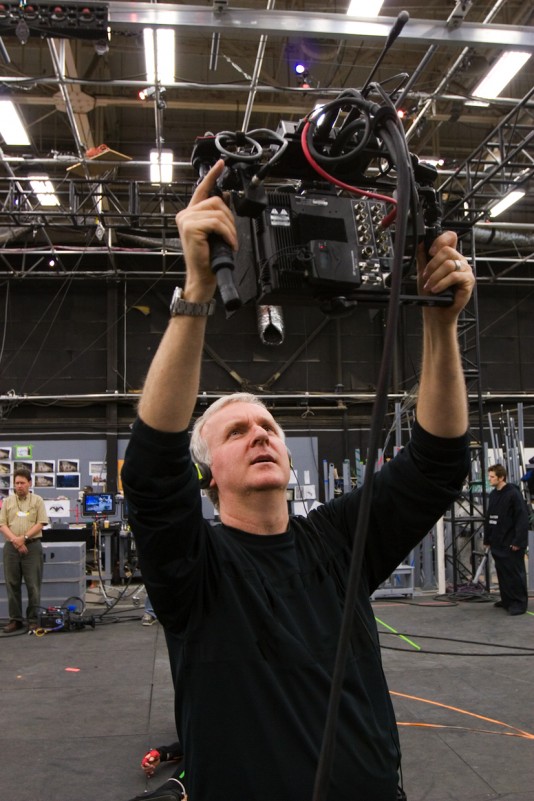The goal is to commercialize the workflows behind Avatar and the Lord of the Rings series.
Autodesk built the biggest booth at Siggraph to talk about all its media & entertainment products—as usual—but the big news from them is the partnership with James Cameron’s Lightstorm Entertainment and Weta Digital, the visual effects company started by “Lord of the Rings” director Peter Jackson, to commercialize the virtual production workflows and technologies first developed by Cameron for “Avatar.”

Virtual production in the film industry (http://area.autodesk.com/fmx2012) is the idea of having digital toolsets for the entire movie-making creative process, starting with the director’s point of view. The idea is to digitize everything that happens on set between “Action!” and “Cut!” to enable the director’s creative process before a CG or mixed live/CG scene is “baked in.” The process involves huge data sets, so there is a challenge behind all this to never remake visual assets (props).
To create “Avatar” Cameron used a custom tablet computer as his visual portal into Pandora, the movie’s alien world setting. He could see the actors as aliens within the CG set. The interactive, nonlinear process spans digital world building, character development and previsualization, to performance capture, virtual cinematography, visual effects, and final rendering.
“Creating the virtual production pipeline on ‘Avatar’ was a groundbreaking process that only enabled us to scratch the surface of what is possible,” says Cameron in an announcement released by Autodesk. “Together with Autodesk and Weta Digital, we have used the knowledge gained from this first experience to clearly define the ideal process and then develop the technology needed to streamline our workflow. With the resulting pipeline, on the ‘Avatar’ sequels, I will be able to devote more of my energy to the creative side of the moviemaking process, and dig deeper into all that is possible with virtual production,” said James Cameron.
Joe Letteri of Weta Digital says the process they are working on makes the digital pipeline “more in line with the traditional on-set style of shooting.”
There is no specific Virtual Production product from Autodesk; instead, aspects of the concept are starting to ship with various pieces of the Autodesk Entertainment Creation Suite 2013. MotionBuilder now loads, saves, and merges files much faster. Motion capture and live input data can be recorded to disk in MotionBuilder’s non-linear editor, allowing a director to record multiple takes. The software also includes HD SDI video output support, which allows MotionBuilder to be integrated into studio video broadcast systems designed to introduce zero frames of lag.
Putting creativity upfront
When a director is on set, it is an expensive process to support everything that happens. Today’s state of the art in digital filmmaking requires many decisions regarding scenes to be made after the director yells “Cut!” The need to move decision-making upfront in the process, all the way to when the director is creating a scene in real-time, is an enormous proposition, one that holds the promise of incredible payback. Autodesk’s Bruno Sergeant says the producers of “Real Steel” documented savings of $16 million by using digital workflow to move decisions upfront in the creative process. “When the shoot becomes merely capturing data,” Sergeant says, “it changes the focus from technology back to the creative side.”





